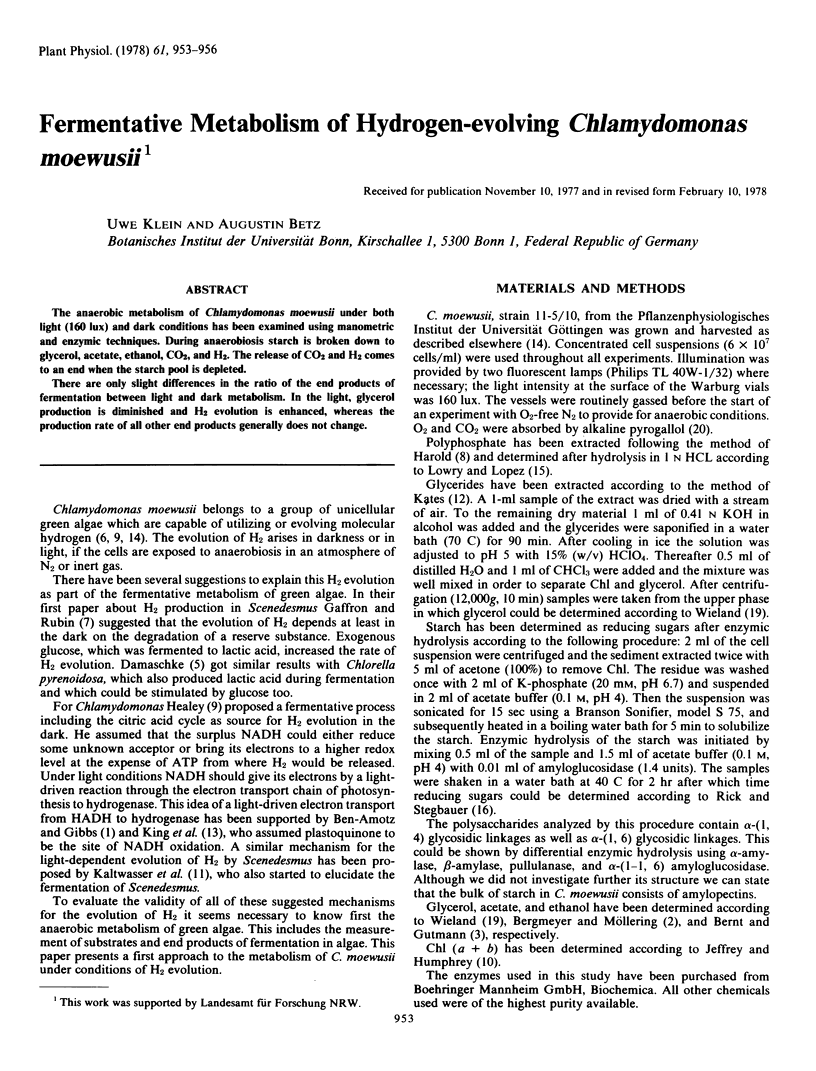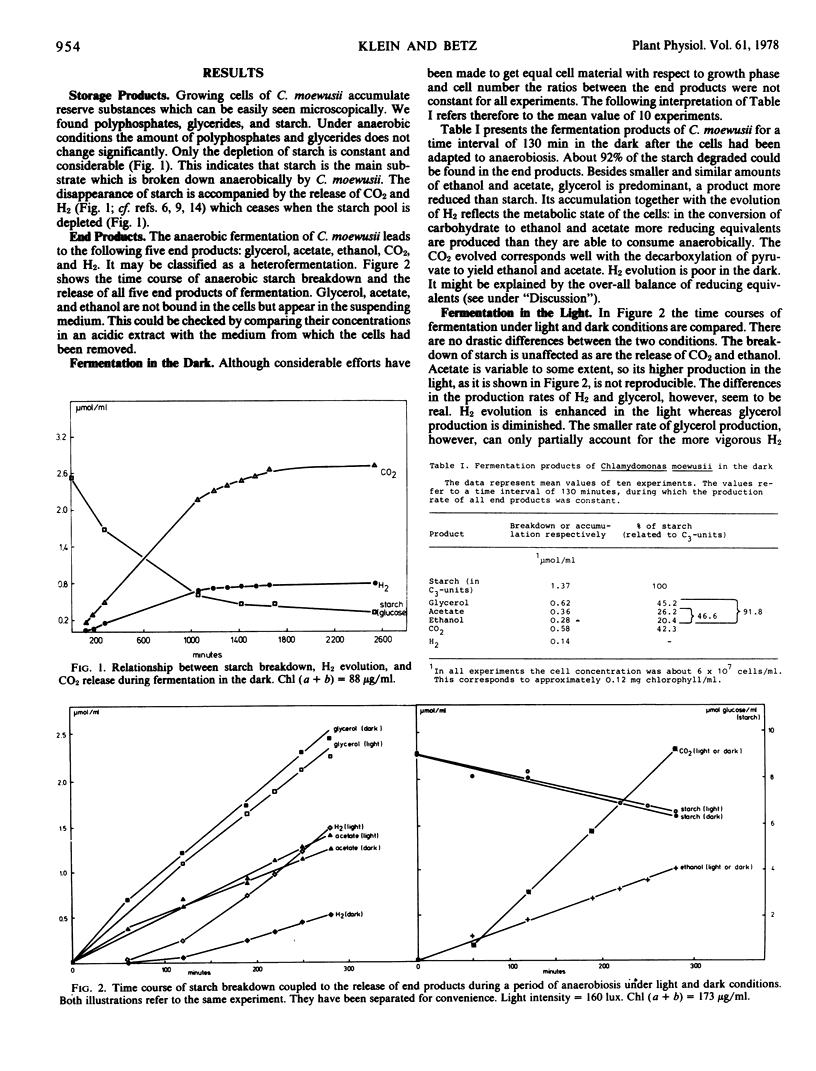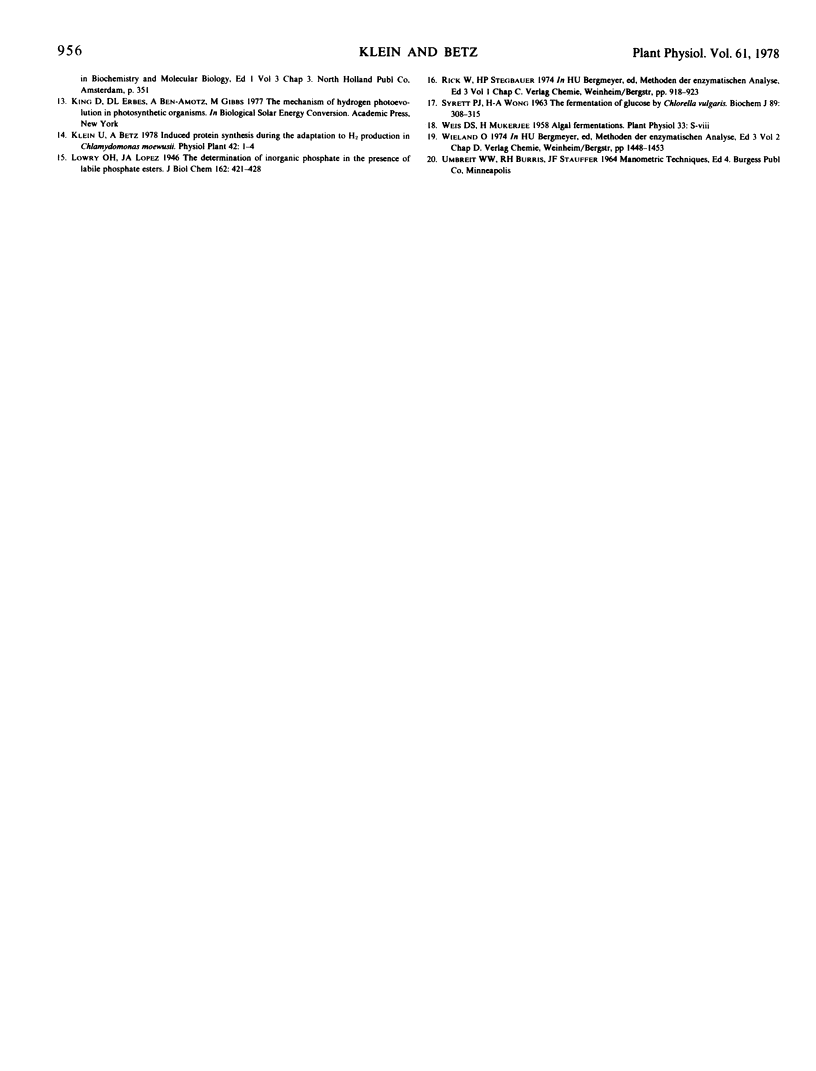Abstract
The anaerobic metabolism of Chlamydomonas moewusii under both light (160 lux) and dark conditions has been examined using manometric and enzymic techniques. During anaerobiosis starch is broken down to glycerol, acetate, ethanol, CO2, and H2. The release of CO2 and H2 comes to an end when the starch pool is depleted.
There are only slight differences in the ratio of the end products of fermentation between light and dark metabolism. In the light, glycerol production is diminished and H2 evolution is enhanced, whereas the production rate of all other end products generally does not change.
Full text
PDF



Selected References
These references are in PubMed. This may not be the complete list of references from this article.
- Ben-Amotz A., Gibbs M. H2 metabolism in photosynthetic organisms. II. Light-dependent H2 evolution by preparations from Chlamydomonas, Scenedesmus and spinach. Biochem Biophys Res Commun. 1975 May 5;64(1):355–359. doi: 10.1016/0006-291x(75)90261-2. [DOI] [PubMed] [Google Scholar]
- FRENKEL A. W. Hydrogen evolution by the flagellate green alga, Chlamydomonas moewusii. Arch Biochem Biophys. 1952 Jul;38:219–230. doi: 10.1016/0003-9861(52)90026-x. [DOI] [PubMed] [Google Scholar]
- HAROLD F. M. ACCUMULATION OF INORGANIC POLYPHOSPHATE IN AEROBACTER AEROGENES. I. RELATIONSHIP TO GROWTH AND NUCLEIC ACID SYNTHESIS. J Bacteriol. 1963 Aug;86:216–221. doi: 10.1128/jb.86.2.216-221.1963. [DOI] [PMC free article] [PubMed] [Google Scholar]
- Healey F. P. The Mechanism of Hydrogen Evolution by Chlamydomonas moewusii. Plant Physiol. 1970 Feb;45(2):153–159. doi: 10.1104/pp.45.2.153. [DOI] [PMC free article] [PubMed] [Google Scholar]
- SYRETT P. J., WONG H. A. THE FERMENTATION OF GLUCOSE BY CHLORELLA VULGARIS. Biochem J. 1963 Nov;89:308–315. doi: 10.1042/bj0890308. [DOI] [PMC free article] [PubMed] [Google Scholar]


